
11 minute read
Sisters Help the Environment
After five years of Laudato Si’, Sisters see environmental work to do
By Dan Heckel, Mount Saint Joseph Staff threatens our commitment
Advertisement
Fto: protect human life ive years ago, Pope Francis urged “every person and dignity, exercise a living on this planet” to engage in a dialogue about the role each of us plays in shaping preferential option for the most vulnerable, promote Maintenance worker Bryan Padgett pours used cooking the future of the earth. His encyclical was called “Laudato Si’: Care for Our Common Home.” His words were met with great affection by the Ursuline Sisters of Mount Saint Joseph, who have the common good, and care for God’s creation,” the letter said. The Ursuline Sisters received criticism oil into a receptacle to recycle. The Mount kitchen recycles oil and liquids used in the cleanup of dishes. made caring for the earth a staple of their spirituality from some of their since they began in their rural home in 1874. Now supporters over taking that stand. that the newness of Laudato Si’ has worn away, the “When we write letters like that, we want people Sisters see more work to do. to know that we not only care about our own area, “I believe Pope Francis has attempted to unify all the social teachings into The Sisters believe they but we are a part of the whole global community,” said Sister Amelia Stenger, one articulated whole – in so many have an important role congregational leader. “We believe that all ways he calls us to recognize the global relationship among people, all creation, and how we treat each other and each component in creation,” Sister Sharon to play in teaching people that spirituality is a part of protecting the earth. people share this planet and each one of us must do our part to take care of it. It is so important for the people of the United States to have a part in decisions that are Sullivan said. “Economics, health care, made globally because the decisions that are education, justice, development and politics are all made affect the local. Jesus said to love our neighbor, part of one unit – each affecting each other and the and this is one way we can do that.” whole. Sort of like a Rubik’s Cube. What still needs The pope’s encyclical took its name from to be done is basically that we all need to get on “Laudato Si’, mi Signore,” which appears in the board. I was so energized by the Paris Accord, the third stanza of Saint Francis of Assisi’s “Canticle hope it generated, the reality of what looked like a of the Sun.” It means “Praise be to you, my Lord.” global effort with real political will.” The Sisters believe they have an important role to
The Paris Climate Agreement of 2015 established play in teaching people that spirituality is a part of a framework for global climate action, including protecting the earth. the mitigation of climate change. President Trump “If people actually become convinced that later withdrew the spirituality is involved in the way we treat the planet, United States from the we would go much farther, much faster,” Sister agreement. Michele Morek said. “Many people had pigeonholed
Ursuline leadership the issue of climate change so that it had nothing joined with other to do with their personal lives or with spirituality – women religious until Laudato Si’ came along. We can help through communities programs offered in the Retreat Center, and through in Kentucky to prayer services, discussions, etc., that we offer in our publicly state their disappointment with that move in a 2019 Sister Michele Morek, right, blesses the farm and the fields with holy water at Mount Saint chapel or even on Facebook. I think we could have some virtual, online presentations that might attract some interest. The way to get parents involved is letter to the editor Joseph in 2009, along with through the kids – the ones who are really getting published in several newspapers. “Catholic teaching is Sister Francis Louise Johnson. The Ursulines try to do this blessing during an annual procession to the cemetery on behind it and always have are the kids.” “Sometimes I hear people equating care for the planet with political realities,” Sister Sharon said. clear – climate change is the Feast of Our Lady of the “The notion that a spirituality could drive something a grave moral issue that Snows on Aug. 5.
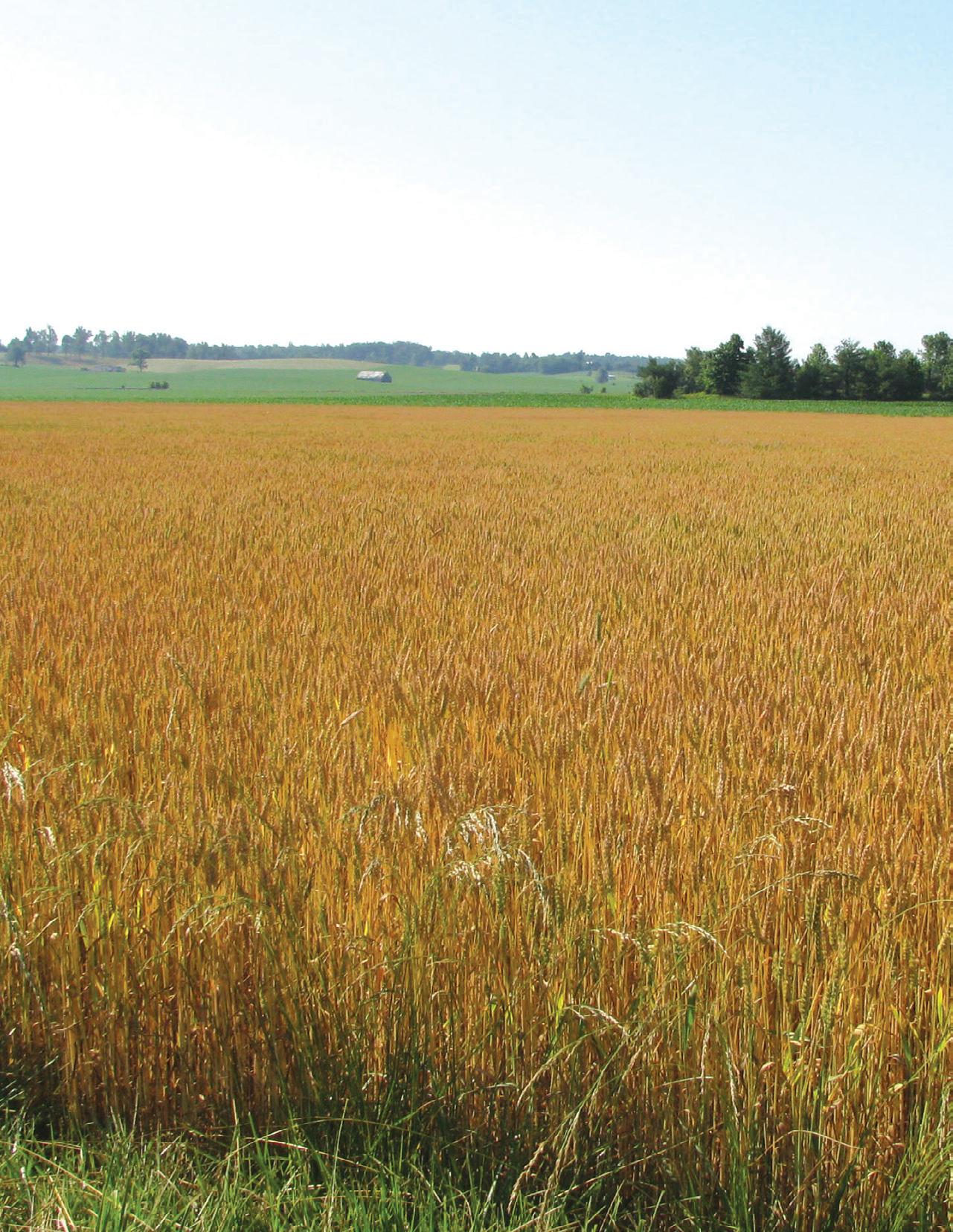

U r s u l i n e s A L I V E Environment From page 3 so complex as caring for the planet seems foreign to so many. It is vital that we continue to model the spiritual base – and what a rich, rich base that is. Isn’t it Thomas Berry who suggests that one of the core spiritual bases for us even being here is to serve as, for want of a better word, the appreciators of God’s creation?”
Aside from being the last three congregational leaders for the Ursuline Sisters, these three Sisters have been active in environmental issues for years.
As director of the Mount Saint Joseph Conference and Retreat Center, Sister Amelia developed an environmental education program for children visiting the Mount. She created such programs as “Save Money, Save Energy, Save God’s Earth” for churches of all faiths, a Green Living Symposium, and she was among those involved in the GREENing Western Kentucky Expo, which Sister Sharon Sullivan tests stood for “Getting the water in Panther Creek in Renewable Energy Education Now.” Daviess County, Ky., in 2013 for Water Watch.
Sister Michele and Sister Sharon were both members of Water Watch, and then Watershed Watch, and Sister Sharon continues to do water testing of local streams. Sister Michele began an environmental science class during her former days as a biology professor at Brescia University in Owensboro. During her previous ministry with UNANIMA, in 2016 she attended the United Nations Climate Change Conference in Paris. From her ministry in Kansas City, she recently took part in an online discussion on Laudato Si’ with EarthBeat, through National Catholic Reporter.
During an election year when the impact of Covid-19 and the civil unrest over racism is dominating the national conversation, the Sisters know it will take extra effort to focus attention on care for the planet. “It is all connected – environmental issues make Covid worse,” Sister Michele said, noting that natural disasters like fires, Lake Garda at Maple Mount floods and storms
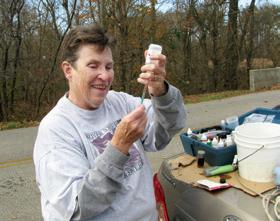


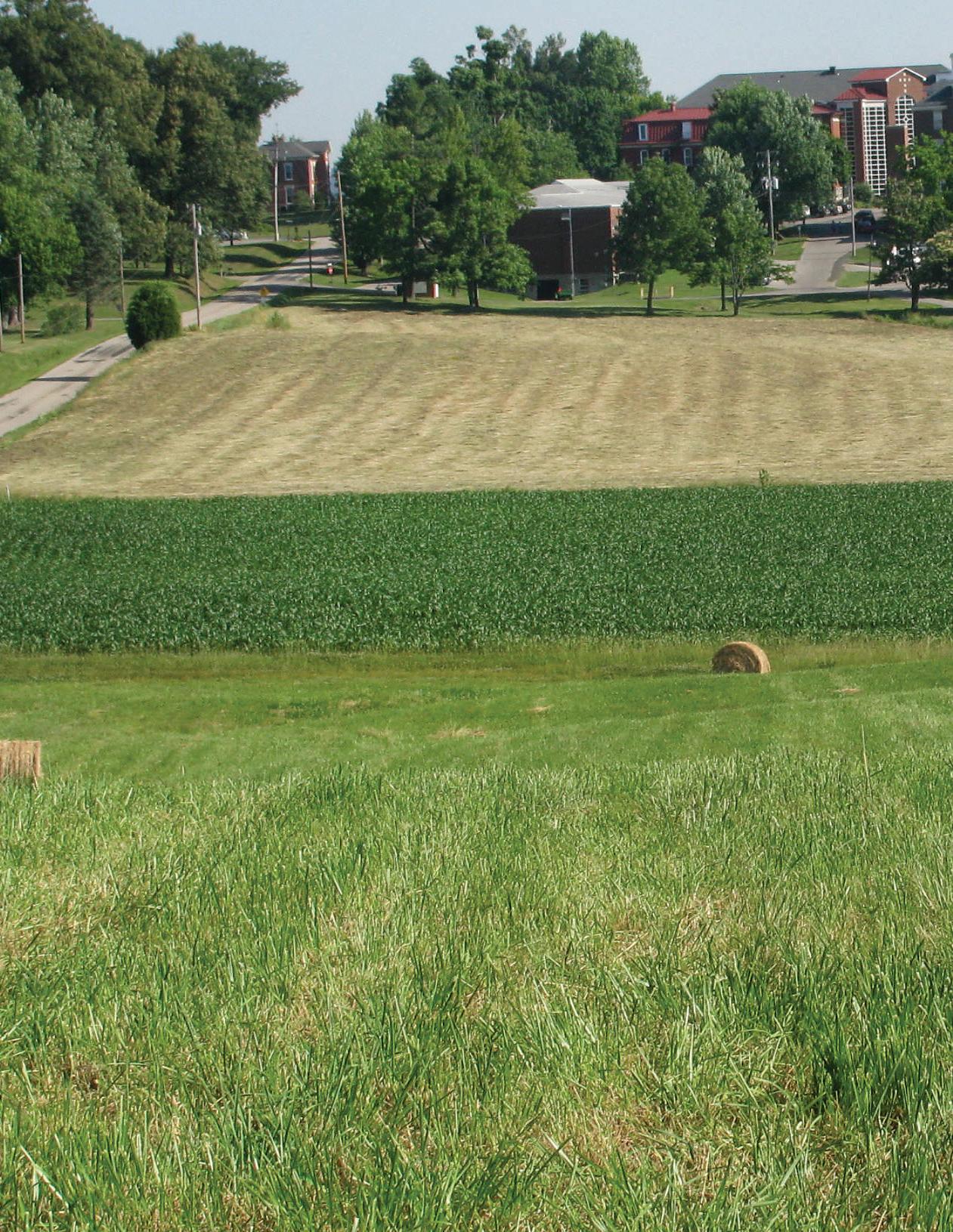
make people take shelter and ignore social distancing.
“Black and Brown and Indigenous People suffer more from Covid and from environmental disasters, another result of racism,” she said. “Climate change has a great potential to unite us across political divides, unless people don’t ‘believe in it’ and actually use it as a political weapon.”
“I hear and see so many whose focus is only on the present, daily task,” Sister Sharon said. “The forester who clearcuts because it is easier, faster and initially more lucrative is living only in the present. The forester who selects and carefully removes to preserve and enhance growth and forest diversity focuses on the sustainable future. The former seems easier – and can become ammunition for those who try to say that strong environmental policies cost jobs. While that is not true, those lobbyists and publicists can get people believing it is true,” she said. “I guess we just have to be the broken record that keeps teaching and modeling the truth that we are one integrated whole and we must believe that every tiny move we make affects the whole.”
Among the many Ursuline efforts to care for the earth, Sister Amelia is especially proud of the environmental audit the community did in the mid1990s to develop a 10-year plan for sustainability.
“Our community has tried for at least 25 years to move to sustainable ways of living,” she said. “We worked with Father Al Frisch, a well-known Catholic environmentalist, to evaluate our properties. When buildings were renovated, they incorporated many ways to sustain the environment, for example, geothermal heating and cooling systems, low flow showers and commodes, better lighting and other water-saving techniques. The Sisters have incorporated recycling in every area possible.”
Sister Michele also cited the sustainability plan as a source of pride, along with the work being done by Sister Larraine Lauter at Water With Blessings, bringing clean water to impoverished nations.
For Sister Sharon, there isn’t a single effort that makes her as proud as much as the decades of consistent efforts from the Sisters.
“Efforts to recycle, to reduce the carbon footprint, to model certain practices, to educate,” she said.
Sister Amelia said Laudato Si’ continues to re-energize the need to work for a sustainable environment.
“It gave us the spirituality of the environment that we needed to connect all aspects of saving our common home.” Cattle at Maple Mount
• (1) The community worked with an environmental religious group in the early 1990s to do an environmental audit on the Motherhouse and developed a 10-year plan, beginning in 1997. All major building renovations since then have incorporated environment-friendly building features like double-paned windows, energy-saver lighting, low-flow toilets and showers, etc. The Retreat Center, Saint Joseph Villa and Saint Ursula Hall use geothermal heating/cooling systems. • (2) The farm uses as few chemicals as possible, with no routine feeding of antibiotics or hormones to the animals, and very little pesticide or herbicides. Other ways the farm staff protects the land include: –No-till planting. It does not disturb the ground like conventional tilling, which can cause soil erosion. Crop residue, such as corn stalks, are left lying on the ground, which helps to keep the ground from washing away in the winter. The planting equipment in the spring clears away the previous year’s debris and plants seed in the same location without tilling. –Additional grassy buffer zones planted to prevent pollution of creeks. A six to seven-foot grass buffer exists between the crops and the creeks to reduce runoff and erosion. –Grass terraces for soil conservation. Some of the pasture fields have terraces because they are on hills. These are mainly ditches with grass at the bottom, that send water to the creek rather than have it run across the field. –Cow and pig manure used to fertilize the fields. Where the cows feed on the hay during the winter, the manure is gathered, then spread over the fields. –Rotation of crops is done annually to preserve the soil and to put nutrients back into the soil for a better crop and to maintain the best methods for farming. –Beef cattle are raised for consumption as well as for sale. This project is possible due to the proper use of pastureland as well as the care of the beef cattle. –Hay fields are raised annually. Some of the hay is used on the MSJ farm while the rest is sold for income. –Two gardens are being raised this year to produce vegetables for consumption. If there is additional produce that we are unable to consume, it is shared with homeless shelters in Owensboro. • (3) Cars with multiple safety features, high gas mileage and better performance are purchased when needed. Vehicles are well maintained and driven for longer mileage before resale.
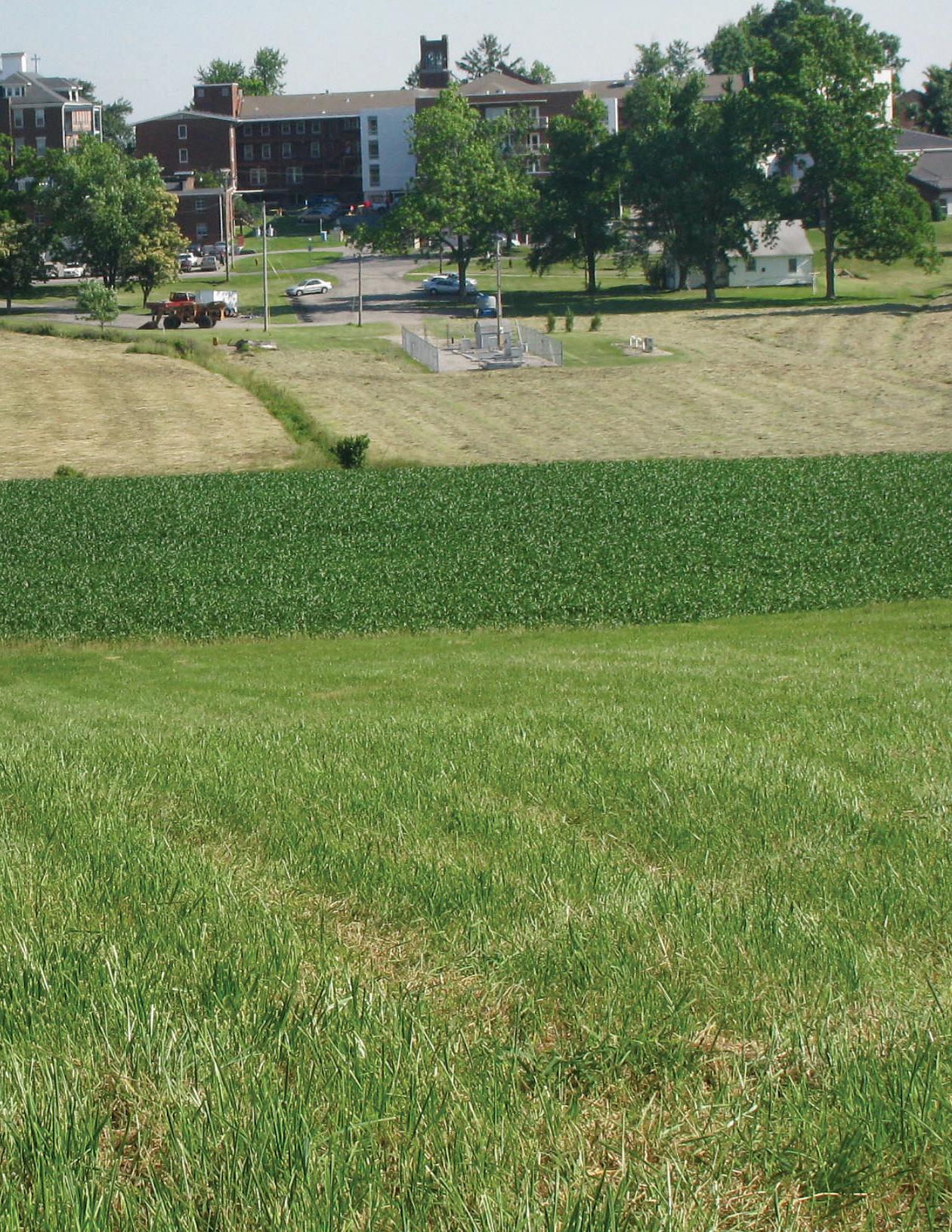
• (4) A recycling program began in 1997 and continues today. The Sisters recycle paper, cardboard, plastic, newspapers, glass, batteries, and even used cooking oil. The Ursuline Sisters of Mount Saint Joseph were honored with the KY EXCEL Champion Award in 2011 by the Kentucky Department for Environmental Protection for their recycling efforts. • (5) Light motion detectors within some buildings are used as renovations have occurred. Exterior lights are on timers from dawn to dusk. • (6) LED light bulbs are used in all possible fixtures as well as T-8’s for florescent lights. LED bulbs are much longer lasting, lessen energy consumption, create better lighting and less labor for installations. • (7) Maintenance staff use battery-operated golf carts to get around campus to perform their work, haul their tools and some equipment instead of using maintenance trucks.
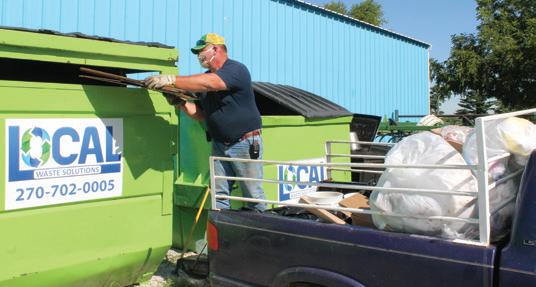
Maintenance worker Bryan Padgett puts cardboard into the Local Waste Solutions dumpster for collection. This pick-up truck gets filled daily with cardboard, paper, plastic and other recyclables on campus.
• (8) Tree plantings are done each year to replace trees that have been felled by storms or removed for safety reasons. This is done in November and December, the best time to plant such vegetation due to less need for watering. • (9) MSJ has its own sewage treatment plant and follows all local, state and federal regulations. During the past year and a half, some changes pertaining to chlorine and purification methods have provided excellent savings as well as fewer possible negative issues of wastewater going into the water systems. • (10) Aging equipment is replaced as needed to save energy usage and consumption as well as expenses. The most efficient products for the best energy use and savings are purchased and installed. An upgraded heating and cooling control system will soon be installed for Paul Volk Hall and should perform well and remain upgraded on a regular basis.






